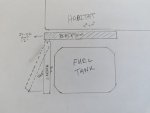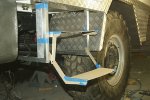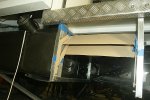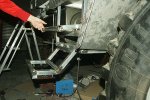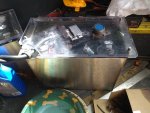RAM5500 CAMPERTHING
OG Portal Member #183
Well, I guess I spoke a bit too soon about the BMS. With our previous BMS we couldn't see the individual cell voltages. Now with this JDB we can, our 400ah pack is made up of 16 100ah 3.2 LifePo4 cells from Frey in China made up in a 4P4S pack to get to 12v. One of the 4P packs (4 of the cells in parallel) now will charge to 3.65 way sooner than the others, causing an overvoltage cell alarm and charging shutoff (it rises to 3.75). This starts to happen when the cells are nearing what the BMS is saying 99% charge. Before that the voltages are all very close and seem to be in "balance". I never top balanced the cells when I got them, back then it seemed like it was an optional step just to get the most out of the batteries. Now I am seeing it is pretty much standard and required. So, at this point would you think of pulling the pack apart to top balance them would correct this or am I a bit too late?
How many times have you tried to charge the system?
Most often, all the cells and batteries take a few cycles to all balance out. It’s normal to have them slightly imbalanced and throwing codes at first, I’d guess the one throwing codes is the first in the series?
Mine took 2 cycles with the JDB BMS and now all balance perfectly
Will Prowse forums DIY solar has a ton of info on this.

